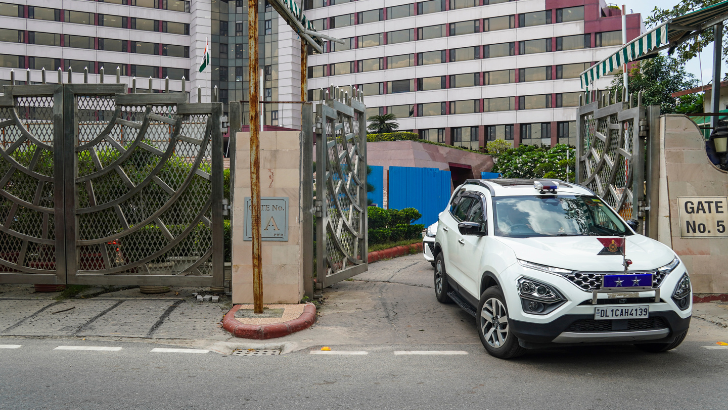Cracker ban goes up in smoke, post-Diwali haze blankets Delhi
Delhi also recorded its most polluted Diwali in three years
PTI
-
Smog engulfs the Raisina hill, in New Delhi on Thursday. PHOTO: PTI
New Delhi, 1 Nov
A thick layer of haze blanketed
Delhi, with the national capital's AQI plunging to 362 on Friday as people
defied a citywide ban on firecrackers during Diwali celebrations. Delhi also
recorded its most polluted Diwali in three years.
On Diwali on Thursday, the city's
24-hour average Air Quality Index (AQI) was recorded at 330, compared to 218 in
2023 and 312 in 2022, according to Central Pollution Control Board (CPCB) data.
The national capital's AQI was recorded in the 'very poor' category with a
reading of 362 at 9 am on Friday.
Most monitoring stations in Delhi
showed similar pollution levels, with 37 out of 39 reporting air quality in the
'very poor' category.
According to the Sameer app that
provides hourly updates of the national AQI published by the CPCB, the AQI in
Alipur was recorded at 355, Anand Vihar at 396, Ashok Vihar at 389, Aaya Nagar
351, Bawana at 396, Burari at 394 and Mathura Road at 371. At IGI Airport, the
AQI was at 371, Dwarka at 376, Jahangirpuri at 390, Mundka at 375, Patparganj
at 365, Rohini at 390, Sonia Vihar at 396, and Wazirpur at 390.
An AQI between zero and 50 is
considered 'good', 51 and 100 'satisfactory', 101 and 200 'moderate', 201 and
300 'poor', 301 and 400 'very poor', 401 and 450 'severe' and above 450 'severe
plus'.
The concentration of PM2.5 -- fine
particles which easily penetrate the respiratory system and pose serious health
risks, especially for children, the elderly and those with pre-existing
respiratory conditions -- also exceeded the safe limit.
At 6 am on Friday, the PM2.5
concentration in Delhi was recorded at 207.8 micrograms per cubic metre. The
safe limit for PM2.5 is 60 micrograms per cubic metre.
In an effort to combat the spike in
pollution during and after Diwali, the Delhi government had enforced a
comprehensive ban on firecrackers for the fifth consecutive year, prohibiting
their manufacture, storage, sale and use.
The city government had also set up
377 enforcement teams and spread awareness through local associations to ensure
compliance with the ban. Police teams were deployed to monitor neighbourhoods,
with officials warning that legal action would be taken against violators.
Despite these efforts, there was
large-scale flouting of the restrictions in neighbourhoods across Delhi.
Reports indicated widespread defiance across east and west Delhi, with
firecrackers lighting up the sky in areas such as Jaunapur, Punjabi Bagh,
Burari and East of Kailash.
Last year, a decrease in stubble
burning incidents in neighbouring states and favourable meteorological
conditions, including rain, prevented the national capital from turning into a
gas chamber after Diwali.
On Friday, the national capital's
minimum temperature was recorded 2.3 notches above normal at 18.4 degrees
Celsius. The wind speed was around 10 kilometres per hour, according to the
weather office.
Higher wind speeds help disperse
pollutants, improving the air quality. At 8:30 am, the humidity level was at 70
per cent on Friday. The weather office has forecast clear skies during the day.
Leave a Reply
Your email address will not be published. Required fields are marked *










.png)
.png)

.png)
.png)
.png)
.png)



